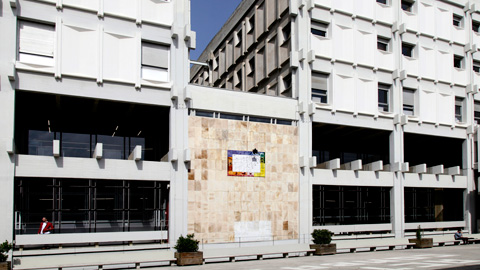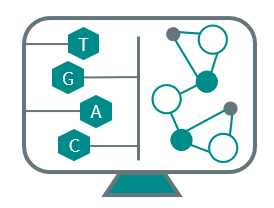
Ruth Gómez: The role of recombination in the origin and evolution of human inversions
The role of recombination in the origin and evolution of human inversions
Ruth Gómez-Graciani1, Antonio Barbadilla1,2, Mario Cáceres1,3
1Institut de Biotecnologia i de Biomedicina, Universitat Autònoma de Barcelona, Bellaterra (Barcelona), Spain, 2Departament de Genètica i de Microbiologia, Universitat Autònoma de Barcelona, Bellaterra (Barcelona), Spain, 3ICREA, -, Barcelona, Spain
Chromosomal inversions are structural variants that alter recombination in heterozygosis and are involved in multiple evolutionary processes. This recombination inhibition could be caused by a physical limitation to synapse during meiosis, or by purifying selection against early gametes carrying aberrant chromosomes resulting from a crossover between opposite orientations. The relevance of each of both mechanisms driving recombination reduction in humans is unknown. To counter purifying selection, new inversions either should arise in regions of low recombination and/or confer positive evolutionary effects that overcome the potential fitness loss caused by their effect on fertility. Here, we investigate the relationship between inversions and recombination in humans by combining different types of recombination maps and a highly accurate set of 133 polymorphic inversions ranging from 0.2 kb to 5.7 Mb. Using pedigree and likelihood-based population recombination maps, we found that inversion location patterns are mainly related to the generation mechanism of inversions: NAHR-mediated inversions are more frequent in repetitive regions, while NH inversions are generated at random in the genome. Large inversions at frequencies above 0.2 overlap less than expected with the highest 10% recombination rates in the genome, and are enriched within the 0.01% lowest recombination rate bins. Using a published set of 813,122 crossovers and 787 aneuploid chromosomes from 20 sperm donors, we observed a decrease in crossover rates within the inverted region in heterozygotes compared to homozygotes, which is especially noticeable in inversions >25 kb. Moreover, we found a positive correlation between the genetic length affected by inversions in heterozygosis and the number of aberrations detected on each chromosome. These results suggest that the reduction of recombination between orientations is due to the unviability of recombinant chromosomes rather to asynapsis. Therefore, inversions are more likely to survive when the crossover probability within the inversion region is low



